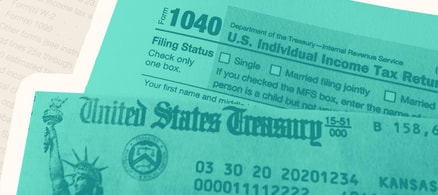The short version
- Qualified Opportunity Funds and donor-advised funds allow real estate investors and charitable investors to take advantage of substantial tax deductions.
- Many public and private companies offer stock purchasing programs that allow investors to invest in the company at a locked price in the future. You won’t face any tax burden when you buy, only when you sell your stocks.
- College grads, business owners, and employees that contribute to certain retirement accounts also qualify for separate deductions that can lower their taxable income.
1. Contribute to a 401(k) or Traditional IRA
One of the easiest, and most common ways you can reduce your taxable income is by contributing to a retirement account. 401(k)s and Traditional IRAs are tax-deferred accounts, meaning you won’t pay taxes on the money you contribute. Instead, you’ll only be taxed when you make withdrawals years down the line.
How does it work?
Here's an example: Let’s say you have a yearly salary of $50,000 and your tax bracket is 25%. If you contribute 5% of this salary to your company’s 401(k), your taxable income would drop from $50,000 to $47,500. You get to this equation by multiplying $50,000 by 5% (50,000 x 0.05), which equals $2,500. You would then subtract that from your $50,000 salary. This reduces your current taxable income to $47,500, saving you money now.
2. Enroll in your employee stock purchasing program
Those who work at publicly traded companies often have the option to take part in their company’s Employee Stock Purchase Plan (ESPP). These programs allow workers to set aside a part of their paycheck to purchase company stock in the future at a specific price, often at a substantial discount compared to outside investors. If the stock goes up by the time you’re ready to purchase, you’re buying it at a substantially lower price and can sell for a profit.
Where do taxes enter into all of this?
Well, you won’t be taxed when you buy stocks, only when you sell. If you sell immediately after buying your shares in order to make a profit, you’ll face regular income tax. If, however, you hold onto your shares for at least a year, you can avoid costly income tax and instead be taxed on your long-term capital gains. Capital gains max out at 20% but are 15% for most individuals, while income tax reaches much higher.
3. Deduct business expenses
For self-employed individuals, business expense deductions are your best friends. Most expenses you face can be deducted come tax time, reducing your taxable income. The expenses you can deduct are far and wide. Some of the most common deductions include:
- Home office deductions — As long as you use a portion of your home exclusively for your home office needs, you should qualify for a home office deduction.
- Property rental deductions — If you rent a storefront to run your business out of, you can claim a deduction for the same year(s) you’re paying rent.
- Mileage deductions — Any mileage you drive expressly for business purposes can be deducted. As of 2023, the mileage rate is 65.5 cents per mile. In the second half of 2022, it was 62.5 cents per mile.
- Office supplies and materials deductions — You can deduct any office supplies and materials you use for business and keep receipts for.
- Phone and internet bill deductions — If you have a regular phone and internet bill for your business you can deduct these expenses.
- Travel expenses deductions — Travel expenses such as flight costs, bus and train tickets, taxis, lodging, and meals all qualify for deductions when you’re traveling for business.
More: 10 best self-employment tax deductions
4. If you can, invest in qualified opportunity funds
Real estate investors should be aware of Qualified Opportunity Funds. Not only are they tax havens, but they allow you to invest in traditionally underserved communities.
Qualified Opportunity funds are a bit more complicated than just declaring a deduction on your taxes. For starters, they’re often only offered to accredited investors. So beginner investors will want to build their investing experience before approaching this option.
Qualified Opportunity Zones were created in 2017 by the Tax Cuts and Jobs Act to help provide funding to 8,700 economically distressed communities around the U.S. In return for helping to boost the economies of these vulnerable areas, the government offers tax incentives for long-term real estate investors. This incentive comes in the form of delayed capital gains tax.
Investors that invest in these funds through brokerages like Fidelity or Vanguard won’t pay any capital gains tax on their earnings until 2026. Investors can choose to defer some or all of their capital gains taxes until this later date, lessening their current tax burden for the initial few years they invest.
5. Donate stocks through donor-advised funds
A donor-advised fund (DAF) is an investment account that investors fund, but all the profits go to a charitable organization. It comes with major tax benefits that make it an incredibly attractive investment. Since donor-advised funds are treated similarly to charitable organizations tax-wise, you can take a deduction of up to 60% of your adjusted gross income.
To secure the full 60% deduction, the donations need to be in cash. Those who donate securities like stocks still qualify for a deduction of up to 30% of their adjusted gross income. Plus, as long as you’ve held the security for at least a year, you won’t face capital gains tax.
Finally, one of the most appealing aspects of these funds is that they allow you to potentially invest in specific charities. Some DAFs let you recommend your preferred charities, so you can ensure your money is going to a cause that you personally believe in.
6. Sell poor-performing stocks
When you have stocks that aren’t performing well, you can utilize the tax-loss harvesting strategy. If you’ve been an investor for any amount of time, you’ve probably heard the term before. Many investors let their robo advisors and financial advisors handle this strategy, but it pays to understand how exactly tax-loss harvesting works.
Harvesting tax losses involves selling off poor-performing investments when and buying other similar investments you expect to perform well in the long run. You can then claim the amount you lost when the stock dipped. So, if you have a $5,000 investment that drops to $2,000 after a few years, you can claim a $3,000 loss, reducing your taxable income.
More: Tax-loss harvesting: Capitalize on your investment losses
7. Deduct student loan interest
College graduates with student loan debt — and current students who are already paying down their debt — may qualify for a student loan interest deduction. If you have federal student loans and meet the following requirements, you can qualify for the deduction:
- Your modified adjusted gross income (MAGI) is less than $70,000 or $145,000 if you’re filing jointly.
- Your loan was used for qualifying expenses like tuition, room and board, other school fees, and books.
- You took out a Parent PLUS loan for your child.
- Your status is not married filing separately.
- You’re not listed as a dependent on any other person’s tax return.
You can still qualify for a deduction if you have a MAGI between $70,000 and $85,000 ($145,000 and $175,000 if you’re filing jointly). You’ll just max out your deduction at $2,500. For anyone who pays more than $600 in interest, you’ll get a form 1098-E in the mail. When you do your taxes, you’ll be asked for the number expressed on this form, this will tell the IRS how much you paid in interest.
8. Open a health savings account
If you’ve chosen to keep your health insurance costs low and have opted for a high-deductible health insurance plan, you can qualify for a health savings account (HSA). Any contributions you make to these accounts are tax-deductible, so you can deduct the amount you contribute from your taxable income. Withdrawals for qualifying health expenses are also tax-free, as well as any interest you accrue on the account.
The only catch here is the contribution limits on HSAs. For 2023, for a self-only HSA, you can contribute up to $3,850. Families can contribute up to $7,750. Those over 55 can make additional “catch-up” contributions of $1,000 max.
More: 5 best types of tax-deferred accounts
9. Hire a professional accountant to help you find savings
At the end of the day, not all of us can wrap our heads around the complexities of our tax system. Working with an accountant or tax preparer can help you find all of the possible ways for you to reduce your taxable income.
The IRS has an entire directory of professional, accredited tax experts. You can search by location, credentials, and name of the preparer. Be prepared to pay a pretty penny for this help, though. You’ll pay about $180/hr to work with a qualified accountant.
Several of the most popular tax software companies also provide access to tax pros for an extra fee. Several offer live video consultations while others can even offer full-service tax prep.
More: Best tax software for investors
The takeaway
When looking to limit your tax burden, you’ll find a long list of deductions you can potentially qualify for. Some are related to your investments, others to your student loans, retirement accounts, health insurance plans, and more. Paying attention to these deductions can reduce your taxable income by thousands, seriously lowering the amount you’ll owe in taxes every year.








